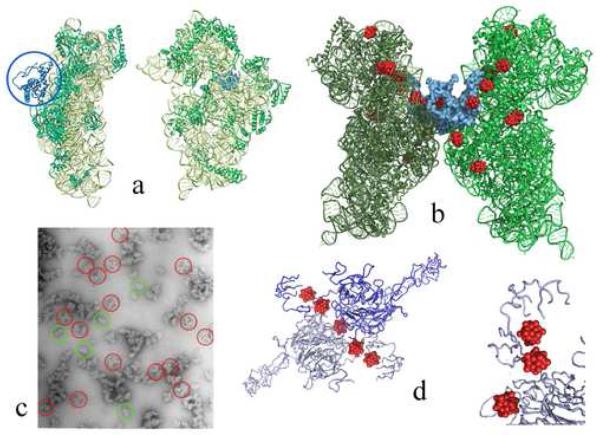Figure 3.
The contacts holding together and rigidify the symmetry related pairs.
(a) Backbone representations of the front (right) and the side (left) views of T30S. The T30S particle is shown in green, except for protein S2 that is shown in blue.
(b) The pair of T30S (in green and dark green) related by the 2-fold rotation axis, with tungsten clusters (in red) bound to them. Protein S2, which is involved in the symmetrical interactions, is shown in a space-fill manner, in blue.
(c) An electron microscopy negatively stained image of the dissolved crystals. Examples for 30S pairs that maintain their crystallographic interactions are circles in red. The green circles indicate typical single particles.
(d) The symmetry relation within the crystals of LDL receptor extracellular domain after treatment with the heteropolytungstate cluster (red). In the bottom right, part of the structure is shown from a slightly different view, which represents the “nest” created by the protein for accommodating the cluster.

